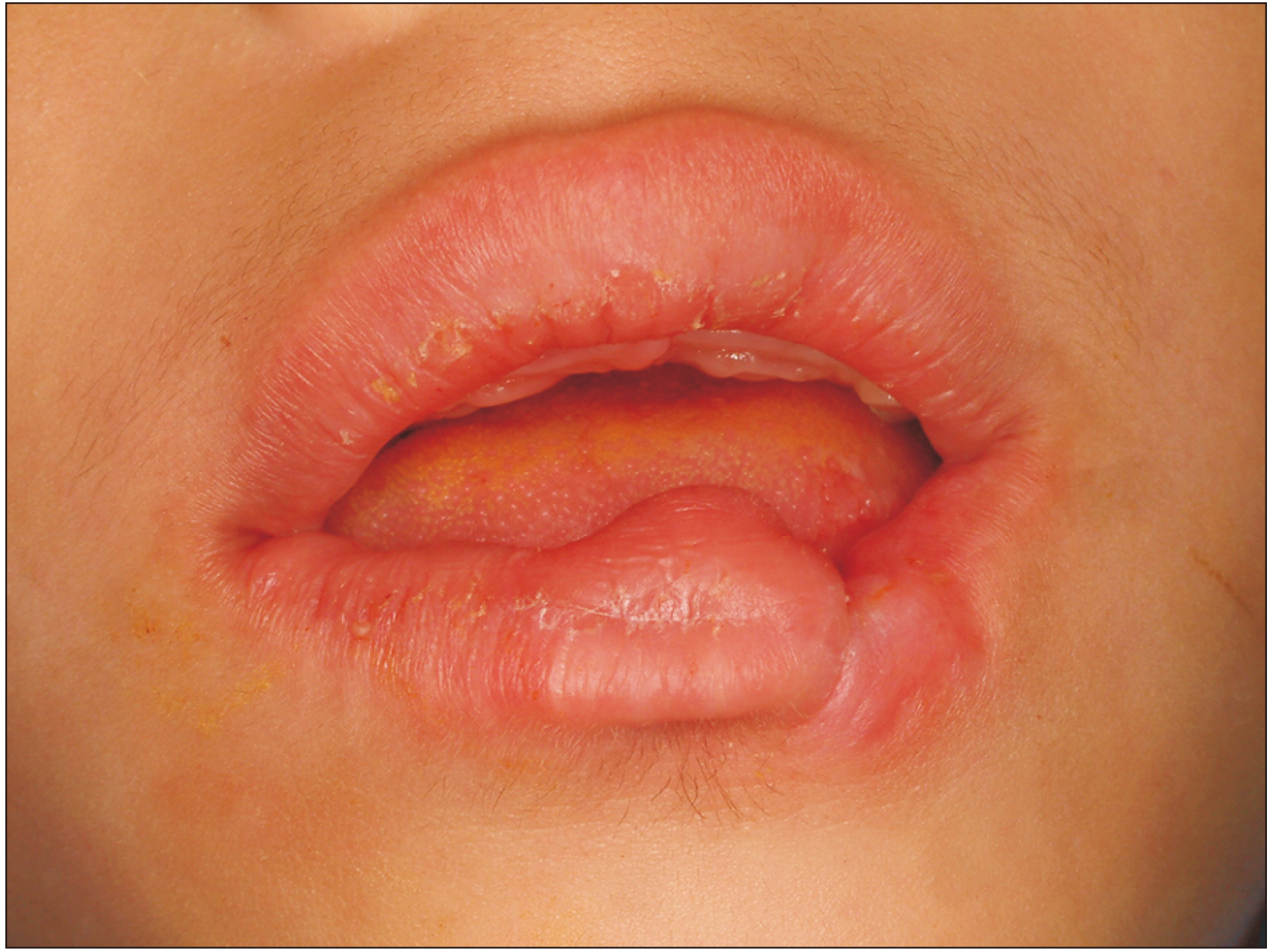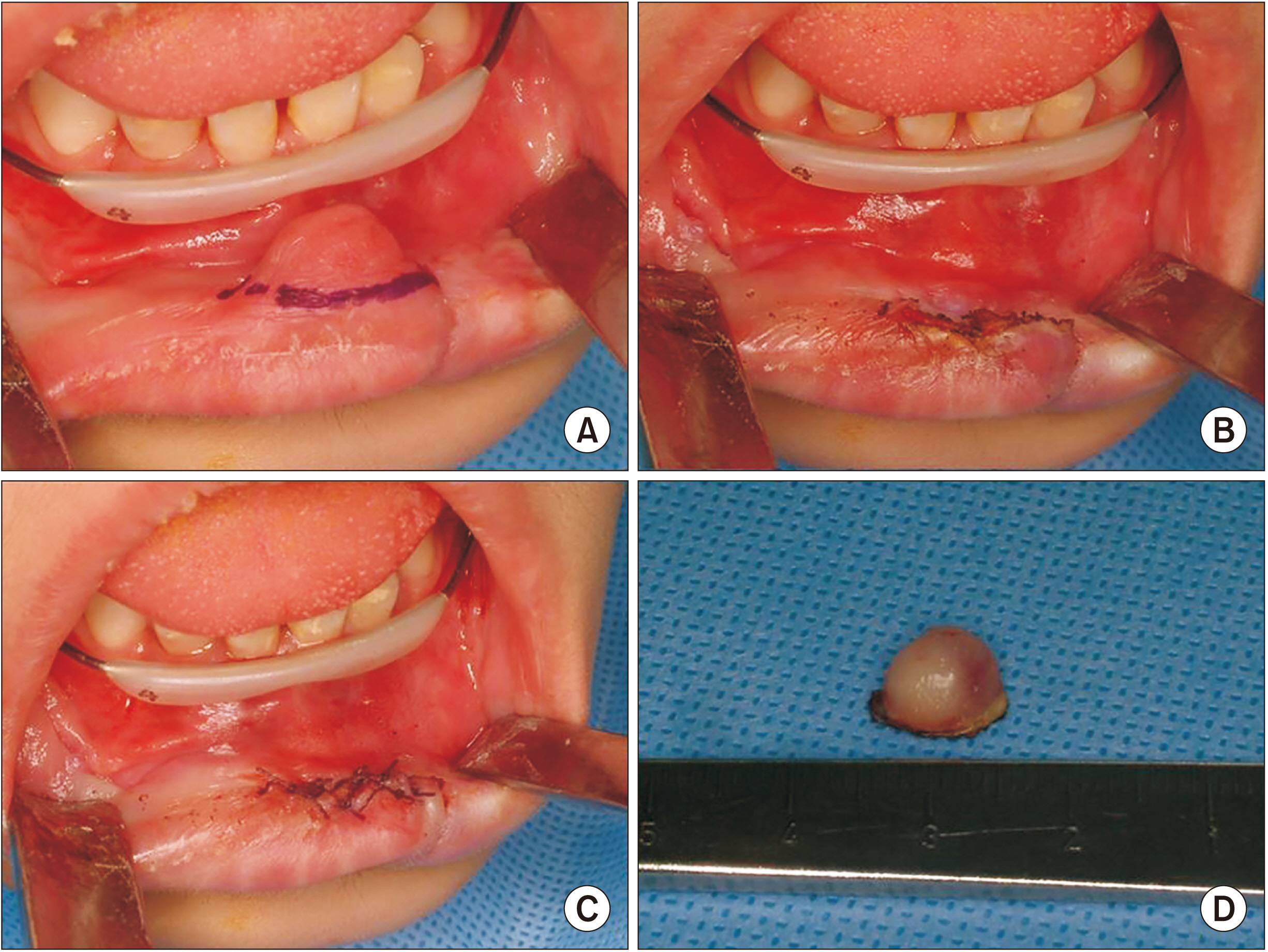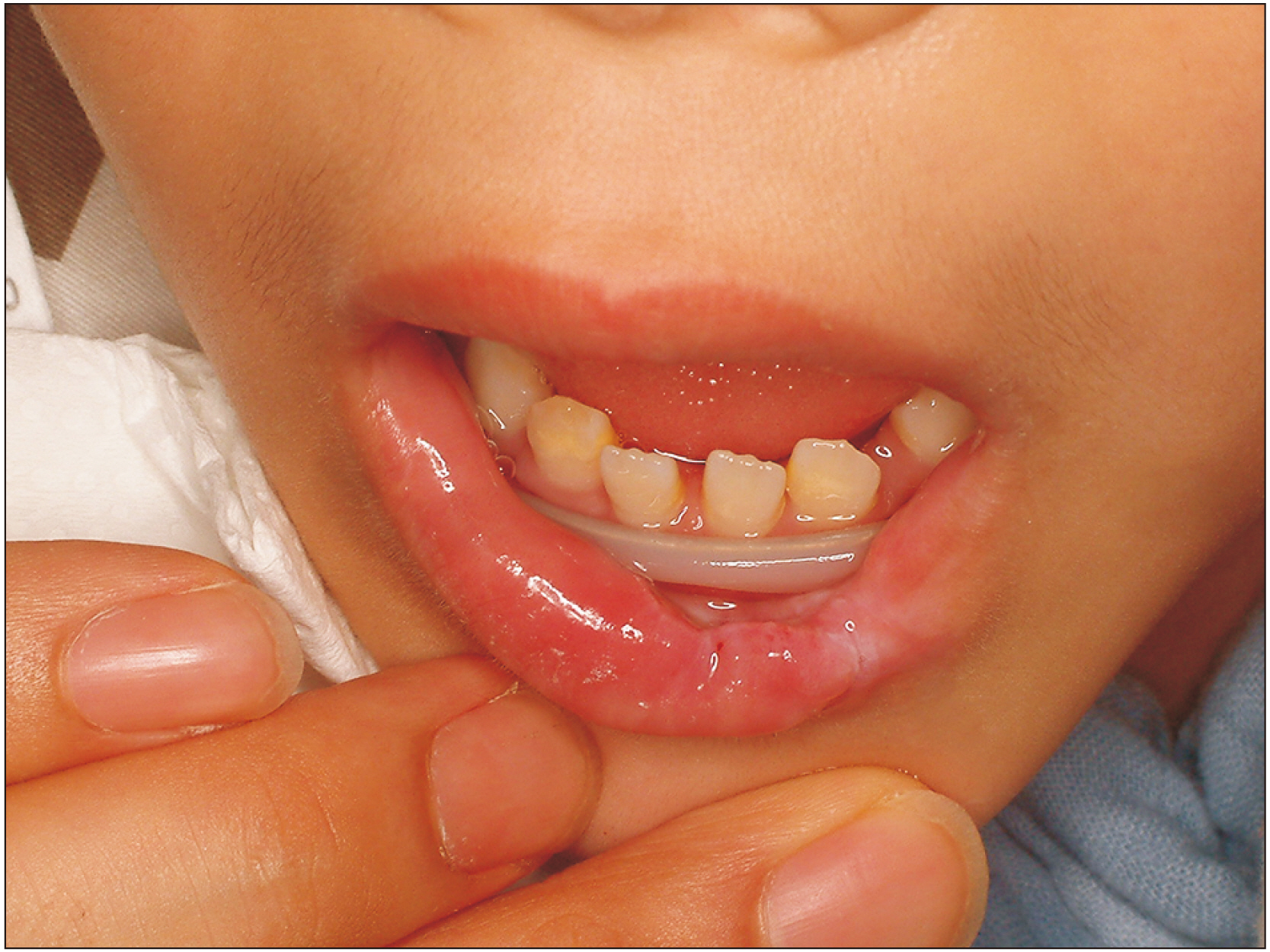J Korean Assoc Oral Maxillofac Surg.
2023 Aug;49(4):228-232. 10.5125/jkaoms.2023.49.4.228.
Lesch–Nyhan syndrome: a case report
- Affiliations
-
- 1Department of Oral and Maxillofacial Surgery, Asan Medical Center, College of Medicine, University of Ulsan, Seoul, Korea
- 2Department of Medical Genetic Center, Asan Medical Center, Seoul, Korea
- KMID: 2545590
- DOI: http://doi.org/10.5125/jkaoms.2023.49.4.228
Abstract
- Lesch–Nyhan syndrome (LNS) is a rare X-linked recessive disorder caused by a mutation in the hypoxanthine phosphoribosyltransferase 1 (HPRT1) gene. This syndrome is characterized by excessive production of uric acid, mental retardation, self-mutilation, choreoathetosis, and spasticity. The most distinctive symptom is compulsive self-mutilation. For patients with LNS, different methods have been tried to reduce self-biting behaviors including restraints, behavioral treatment, medications, deep brain stimulation, tooth extraction and botulinum toxin A injection. In this report, we present a case of LNS undergoing cheiloplasty due to self-mutilation and tooth extraction of the left deciduous maxillary canine.
Figure
Reference
-
References
1. Bell S, Kolobova I, Crapper L, Ernst C. 2016; Lesch-Nyhan syndrome: models, theories, and therapies. Mol Syndromol. 7:302–11. https://doi.org/10.1159/000449296. DOI: 10.1159/000449296. PMID: 27920633. PMCID: PMC5131334.
Article2. Arhakis A, Topouzelis N, Kotsiomiti E, Kotsanos N. 2010; Effective treatment of self-injurious oral trauma in Lesch-Nyhan syndrome: a case report. Dent Traumatol. 26:496–500. https://doi.org/10.1111/j.1600-9657.2010.00930.x. DOI: 10.1111/j.1600-9657.2010.00930.x. PMID: 21078074.
Article3. Gilbert C, Sauer M, Cheng J. 2021; Reduction of self-mutilating behavior and improved oromotor function in a patient with Lesch-Nyhan syndrome following botulinum toxin injection: a case report. J Pediatr Rehabil Med. 14:133–6. https://doi.org/10.3233/prm-200729. DOI: 10.3233/PRM-200729. PMID: 33720862.
Article4. Cauwels RG, Martens LC. 2005; Self-mutilation behaviour in Lesch-Nyhan syndrome. J Oral Pathol Med. 34:573–5. https://doi.org/10.1111/j.1600-0714.2005.00330.x. DOI: 10.1111/j.1600-0714.2005.00330.x. PMID: 16138897.
Article5. Dabrowski E, Smathers SA, Ralstrom CS, Nigro MA, Leleszi JP. 2005; Botulinum toxin as a novel treatment for self-mutilation in Lesch-Nyhan syndrome. Dev Med Child Neurol. 47:636–9. https://doi.org/10.1111/j.1469-8749.2005.tb01218.x. DOI: 10.1111/j.1469-8749.2005.tb01218.x. PMID: 16138673.
Article6. Harris JC. 2018; Lesch-Nyhan syndrome and its variants: examining the behavioral and neurocognitive phenotype. Curr Opin Psychiatry. 31:96–102. https://doi.org/10.1097/yco.0000000000000388. DOI: 10.1097/YCO.0000000000000388. PMID: 29227296.
Article7. Garcia-Romero MDM, Torres RJ, Garcia-Puig J, Pascual-Pascual SI. 2022; Safety and efficacy of botulinum toxin in the treatment of self-biting behavior in Lesch-Nyhan disease. Pediatr Neurol. 127:6–10. https://doi.org/10.1016/j.pediatrneurol.2021.10.018. DOI: 10.1016/j.pediatrneurol.2021.10.018. PMID: 34891105.
Article8. Limeres J, Feijoo JF, Baluja F, Seoane JM, Diniz M, Diz P. 2013; Oral self-injury: an update. Dent Traumatol. 29:8–14. https://doi.org/10.1111/j.1600-9657.2012.01121.x. DOI: 10.1111/j.1600-9657.2012.01121.x. PMID: 22340154.
Article9. Shapira J, Birenboim R, Shoshani M, Abdel-Kader A, Behar O, Moskovitz M, et al. 2016; Overcoming the oral aspects of -self-mutilation: description of a method. Spec Care Dentist. 36:282–7. https://doi.org/10.1111/scd.12181. DOI: 10.1111/scd.12181. PMID: 27105292.
Article10. Ragazzini G, Delucchi A, Calcagno E, Servetto R, Denotti G. 2014; A modified intraoral resin mouthguard to prevent self-mutilations in lesch-nyhan patients. Int J Dent. 2014:396830. https://doi.org/10.1155/2014/396830. DOI: 10.1155/2014/396830. PMID: 25101126. PMCID: PMC4102014.
Article11. Jathar P, Panse AM, Jathar M, Gawali PN. 2016; Lesch-Nyhan syndrome: disorder of self-mutilating behavior. Int J Clin Pediatr Dent. 9:139–42. https://doi.org/10.5005/jp-journals-10005-1350. DOI: 10.5005/jp-journals-10005-1350. PMID: 27365935. PMCID: PMC4921883.
Article12. Gutierrez C, Pellene A, Micheli F. 2008; Botulinum toxin: treatment of self-mutilation in patients with Lesch-Nyhan syndrome. Clin Neuropharmacol. 31:180–3. https://doi.org/10.1097/wnf.0b013e31814a62cc. DOI: 10.1097/WNF.0b013e31814a62cc. PMID: 18520986.
Article
- Full Text Links
- Actions
-
Cited
- CITED
-
- Close
- Share
- Similar articles
-
- Lesch-Nyhan Syndrome in Two Brothers: Dental Approach to Prevent Injuries Caused by Self-mutilative Behaviors
- A Case of Lesch-Nyhan Disease Manifesting Gouty Arthritis without Self-mutilation
- General Anesthesia for Extracorporeal Shockwave Lithotripsyin Child with Lesch-Nyhan Syndrome
- Molecular analysis of hypoxanthine guanine phosphoribosyltransferase (HPRT) gene in five Korean families with Lesch-Nyhan syndrome
- Semi-Fixed Lip Bumper in Lesch-Nyhan Syndrome: An Interim Treatment Modality





